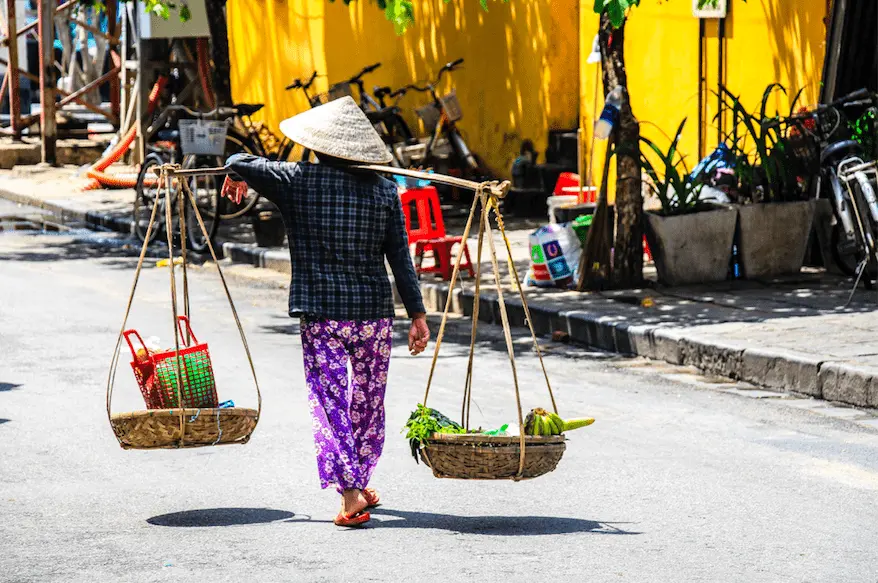Vietnam might not be the most famous of SE Asia’s economies compared to the might of China or the high-tech power-houses of Japan and Singapore. However, this country of over 93 million people is one of the region’s healthiest economic performers. Here’s the lowdown on the country’s food and beverage sector.
A strong economy. Although the Vietnamese economy has some weaknesses, its economic numbers are impressive. Vietnam’s GDP has seen annual growth of a very healthy 6% over the last decade and this trend is forecast to continue through at least the next 5 years.
With a growing import sector. Vietnam has its own vigorous agricultural sector, but nonetheless, imports are an important part of its food and beverage market. In 2017 agricultural and food product imports were valued at around $35 billion AUD.
Food processing and manufacturing is a priority – and a growth area. The food and beverage production industry in Vietnam has seen growth of around 7% since 2013, and it’s an area the Vietnamese government has identified as a priority. The sector uses both domestic and imported ingredients.
High employment and growing consumption. Vietnam’s unemployment level currently sits around 2 – 3%. With most of the population employed, and a growing urbanised middle class, the value of private consumption has risen between 6% and 7% over the past two years. The food and beverage component of household spending is expected to grow by more than 11% by 2022.
Food safety is a growing issue. Awareness of food safety is growing in Vietnam following several food poisoning scandals and consumers are starting to look at safety and quality over price. Imports from countries with strong food safety regulations are viewed as premium quality options.
Convenience matters. As in many other countries, Vietnam’s consumers lead increasingly busy urbanised lives, and they are looking for products that make those lives easier. Convenience is becoming a major factor in purchasing decisions, and that’s good news for the packaged food industry.
Packaged food is a fast-growing market. Packaged food is one of the growth superstars in Vietnam’s food and beverage market: since 2013 the market sector has grown by over 40%. Similar levels of growth are predicted in the next 3-4 years, taking the sector value to more than $22 billion AUD. Major products include ready meals, dairy products, breakfast cereals and snack bars, confectionary, ice-cream and other frozen desserts, and key staples such as rice and noodles.
Sales outlets are evolving. Hypermarkets and supermarkets are growing as key sales points for food and beverages. Although most Vietnamese consumers still shop daily in traditional markets and small grocers, one-stop shops with a wide variety of products are gaining traction and hypermarkets and supermarkets are established as a key part of the retail scene.
As in many countries, convenience stores are also very popular shopping options, especially in cities. They have particular appeal for the younger demographic of shoppers who want to call in on the way home from college or work, and convenience store offerings are evolving to meet the demands of these consumers. That includes offering more ready meals and snacks, and moving into the food services sector by offering eat-in, fast food options.
Dining in is becoming dining out. Vietnam has a relatively mature food service sector, supported by tourism, urbanisation, and younger consumers who are following increasingly westernised lifestyles. With higher levels of disposable income available, more consumers are trading price for convenience and experience and opting to eat out.
Old barriers to trade are coming down. Infrastructure in Vietnam is improving, with the government committing 5.7% of GDP to infrastructure investment. In more rural areas, significant barriers to distribution and transport can remain, but around Ho Chi Minh City and Hanoi, the large urban populations are increasingly well served with roads, rail and new airports.
Australia’s geographic and political location in the SE Asian region places our companies in a stronger position than many western competitors. Vietnam is a signatory to the Trans-Pacific Partnership, and to the ASEAN-New Zealand-Australia trade agreement. As well as improving market access, that means key products are now tariff-free, including beef, pork and lamb, many fish products, cheese, yoghurt and milk, a wide range of nuts and fruits, honey, chocolate, and biscuits.
We think you’ll agree that Vietnam is an intriguing market option for Australian exporters. If you’d like to know more, why not drop us a line here at Export Connect and find out how we can help your business – we love talking to you.




